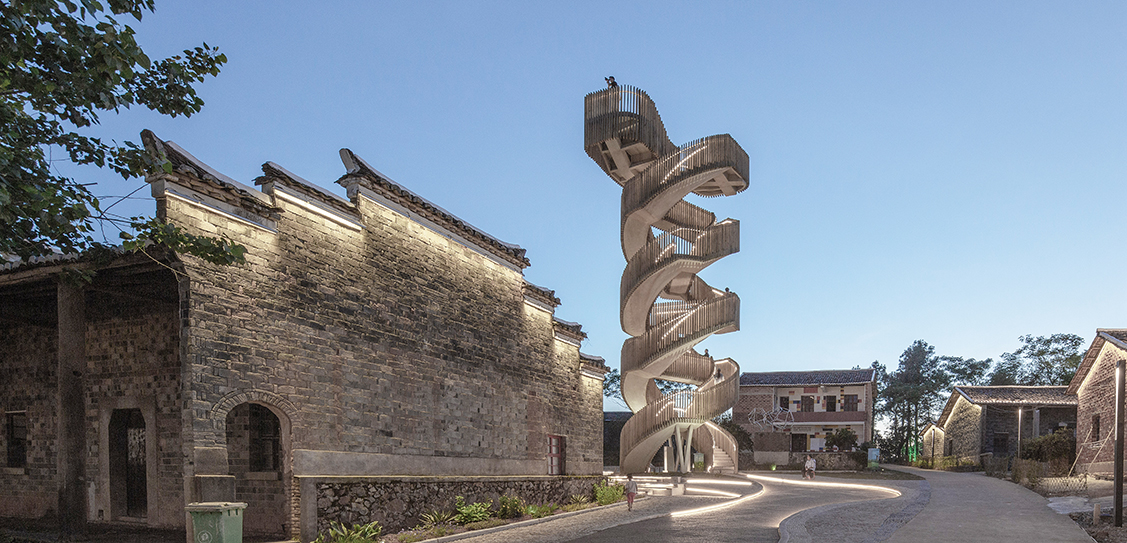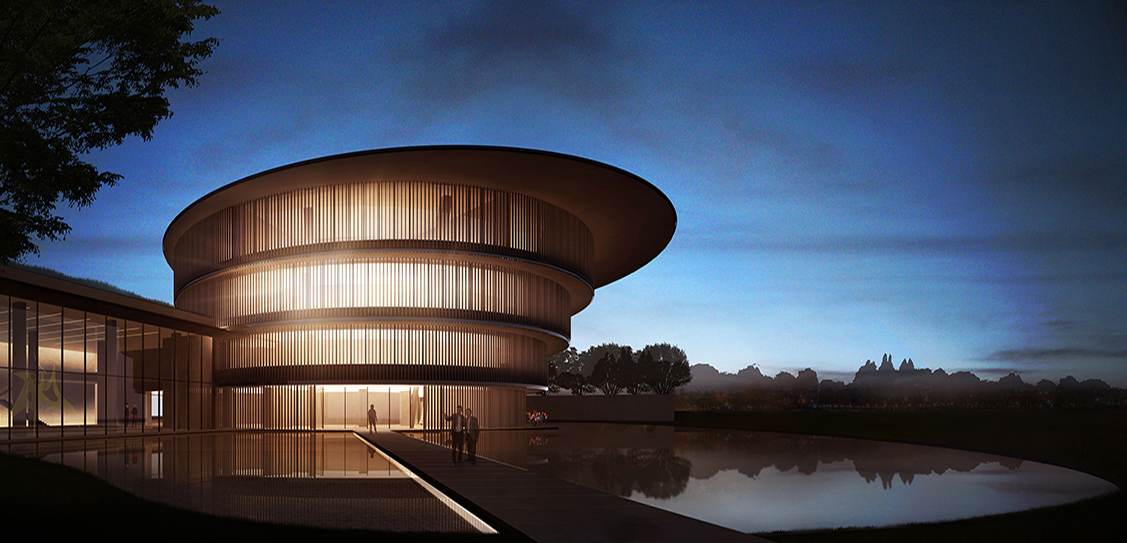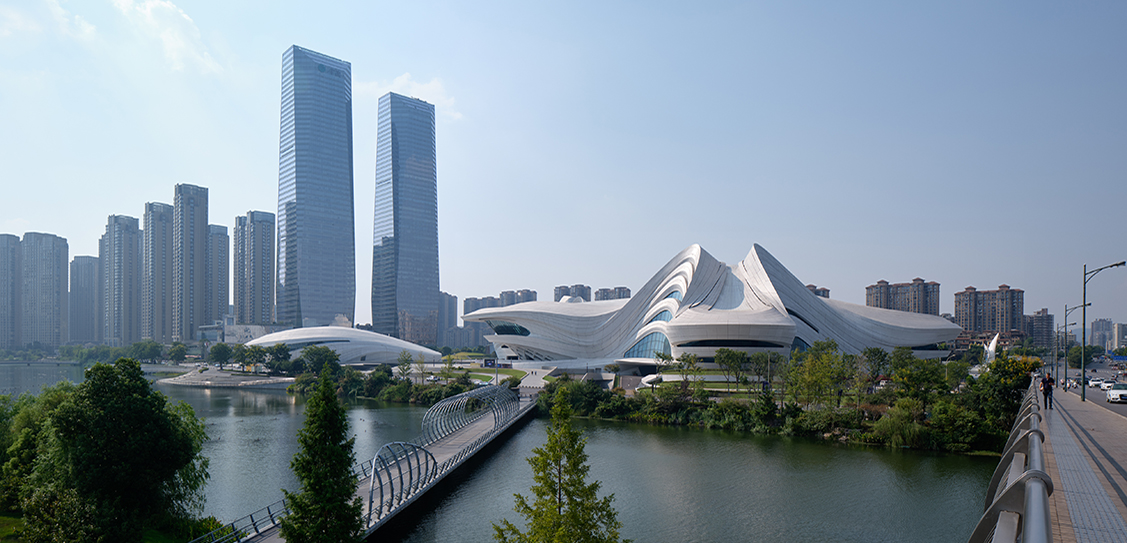NEXT architects combine Chinese and Dutch cultures to create unique art village
Chinese urban migration has left many villages abandoned, villages that have generations of social, cultural and monumental value for future generations. To address this challenge, NEXT architects, together with IVEM (Dutch Institute for heritage and marketing), Smartland Architects (landscape design), Total Design (graphic design) and numerous artists were asked by the Government of Jinxi, Jiangxi Province to develop a strategy for one of its 102 abandoned villages, Dafang.
NEXT architects designed a flexible and attractive environment for Chinese and Dutch artists to work, interact and exhibit locally. The whole village, including its architecture and landscape, becomes an interactive environment constantly able to re-invent itself. As a result, a new generation of visitors and inhabitants will be attracted and inspired.
Tadao Ando Architect & Associates reveal their design for China’s He Art Museum
HEM was conceived as a gateway into southern China’s regional Lingnan culture and arts, including Cantonese opera with theatrical face painting and distinctive Cantonese cuisine. Its collection of Lingnan School paintings showcases the indigenous style of painting originally created by artists living in the three coastal provinces of Guangdong, Canton, Guangxi and Hainan, an island in the south China sea.
Tadao Ando extensively researched China’s ancient history and Lingnan’s architecture to inform HEM’s design; Ando held a persistent attitude in cultural infusion, drawing inspiration from the local architectural and cultural context in Shunde. Named after the museum’s founder He Jianfeng, “He” in Chinese also carries multiple meanings, harmony, balance, fortune and union. Ando has drawn from these connotations and Lingnan architecture’s technique of spatial integration for HEM’s design.
A suspended cloud: Jiunvfeng Study on Mount Tai
Jiunvfeng Study is located in Daiyue District, Tai’an City, adjacent to the Shenlong Grand Canyon, with Mount Tai, the top of the five sacred mountains, in the east. It is surrounded by mountains, full of rocks like flocks of sheep, with the broad vision of overlooking the gorge and gully and looking out at mountains and peaks. On the rocky mountain in the north, the contrasting white is left vacantly, which was the original idea of the design.
The building form can be divided into three parts from top to down: the white “cloud body”, transparent glass and thick rubble wall base. The north side faces the wide interface of canyon and peak. The narrow corridor at the entrance connects the coffee bar and the reading area at the two sides. It blurs the boundary between the architecture and the natural landscape, giving visitors and readers the illusion of being at the top of forests and mountains.
Rethinking a medieval environment into China’s modern setting
Quad Studio designed Medieval Rethink, a cultural centre inspired by a 900 year old medieval village from the Song dynasty situated on the outskirts of a Fujian city.
The building was designed to respond to its historic surroundings by rebuilding a mini village inside the cultural centre, in order to have a better preservation molded from the original. The project is under construction in Guangdong China and set to be completed in the second quarter of 2021.
Foshan’s “fairytale village” by GeeDesign
The Beiwei Industrial Area is a focal point of urban living environment improvement and renovation, relying on the construction opportunity of Leshang Town and integrating diversified industries, public services and intelligent living. Located at the intersection of Chuangfu Road and Chuangxing 7th Road in the south of the area is the Everbright Kindergarten, surrounded by a water network and criss-crossed by a natural landscape. It is a high quality residential area under construction, though there are plans for it to introduce the best quality education resources in the region.
Due to the boundary restrictions of the residential areas and the control of the multilayer retreat boundary in the intersection zone, it was extremely difficult to plan construction. As of consequence, the community was in great need of a kindergarten, one that would accommodate 12 classes, a super sized music-event room and two activity areas. The occupied area was only 5,400 sq m, and the cramped space still needed to coordinate with the various interfaces of the city.
Ancient Chinese jewellery box inspires Aedas’s design for Renhe Town
Renhe Town, designed by Aedas, stands at a prime location adjacent to Chengdu Government’s New Administration Center. The development comprises residential units at Phase 1 and commercial mixed use complex at Phase 2. Continuing the minimalist design of Phase 1, the designer, Aedas Executive Director Cary Lau, brings forward a commercial landmark with a unique silhouette that carries a classic elegance of the Orient.
Lau draws inspiration from the ancient Chinese jewelry box; the podium facade is composed of multiple receding glass showcases thereby appearing like the sliding drawers of the jewelry box. The design elicits commercial vitality with an architectural silhouette of oriental charm which also implies good wishes on the business, for wealth to gather. Behind the glass showcases are the retail stores, which may utilize the grand glass windows for display and decorations according to their needs.
Zaha Hadid Architects design: Meixihu International Culture and Arts Centre opens to visitors
The new Culture and Arts Centre by Zaha Hadid Architects incorporates a contemporary art museum (MICA), an 1,800 seat theatre with supporting facilities and a multipurpose hall. Its organic architectural language is defined by pedestrian routes that weave through the site to connect with neighbouring streets.
Providing views of the adjacent Meixi Lake from the city and giving access to the parks and walking trails on the lake’s Festival Island, this ensemble of three separate cultural institutions creates external courtyards where pedestrian routes intersect for outdoor events and sculpture exhibitions.
The Culture & Arts Centre connects directly with its station on Line 2 of Changsha’s new Metro System, making it the largest and most versatile cultural centre in the Hunan province.



